Get our FREE E-Book HERE - 120 TIPS for Losing Weight & Bonus Tips for Postpartum Weight Loss & Dad’s Postpartum Experience
What is my ideal weight?
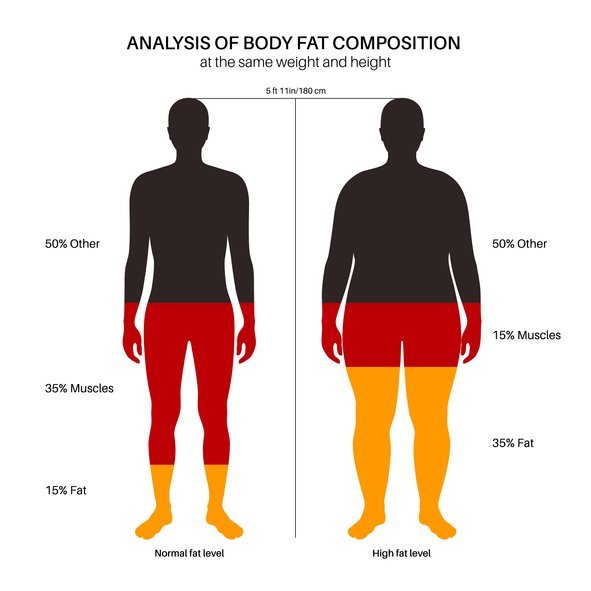
Introduction
People ask us all the time. What is my ideal weight ? Am I overweight? Determining someone’s ideal weight can be quite complex as it involves various factors including height, body composition, muscle mass, and overall health. There have been different approaches and studies aimed at defining what an ideal weight is:
Body Mass Index (BMI):
A common method to determine a healthy weight range is using the Body Mass Index (BMI), which is a value derived from an individual’s height and weight (1) .
Another study compared ideal body weight (IBW) formulas and published height-weight tables for healthy adults in the United States with a BMI of 22 kg/m2, which is associated with the lowest mortality. (2)
What is your BMI ? Find out using our free calculator

Morbidity and Mortality Risks:
Another approach to determining a healthy body weight is by looking at the risk of morbidity and overall mortality associated with different weight levels.
For instance, a couple of studies, the Health Professional Study and the Nurses Health Study, pointed out that greater weight gain since young adulthood could lead to a higher risk of diabetes or early death. (3)
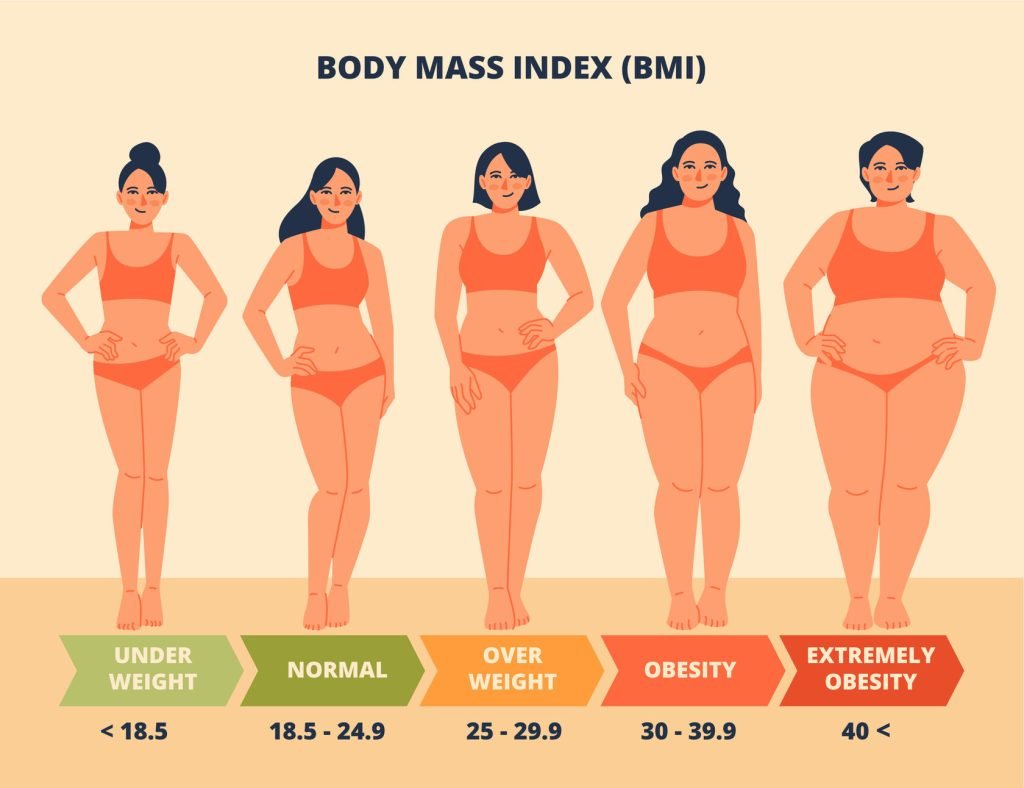
Body Fat Percentage:
A study involving adults aged 45–64 established body fat percentage cutoff points of 25.8% for men and 37.1% for women when determining an ideal body weight range. (4)
Historical Height-Weight Tables:
In 1959, the Metropolitan Life Insurance Company suggested ‘ideal’ body weights for men and women based on weight, height, and body frame, although this approach didn’t consider co-morbid factors such as smoking and family history diseases. (5)
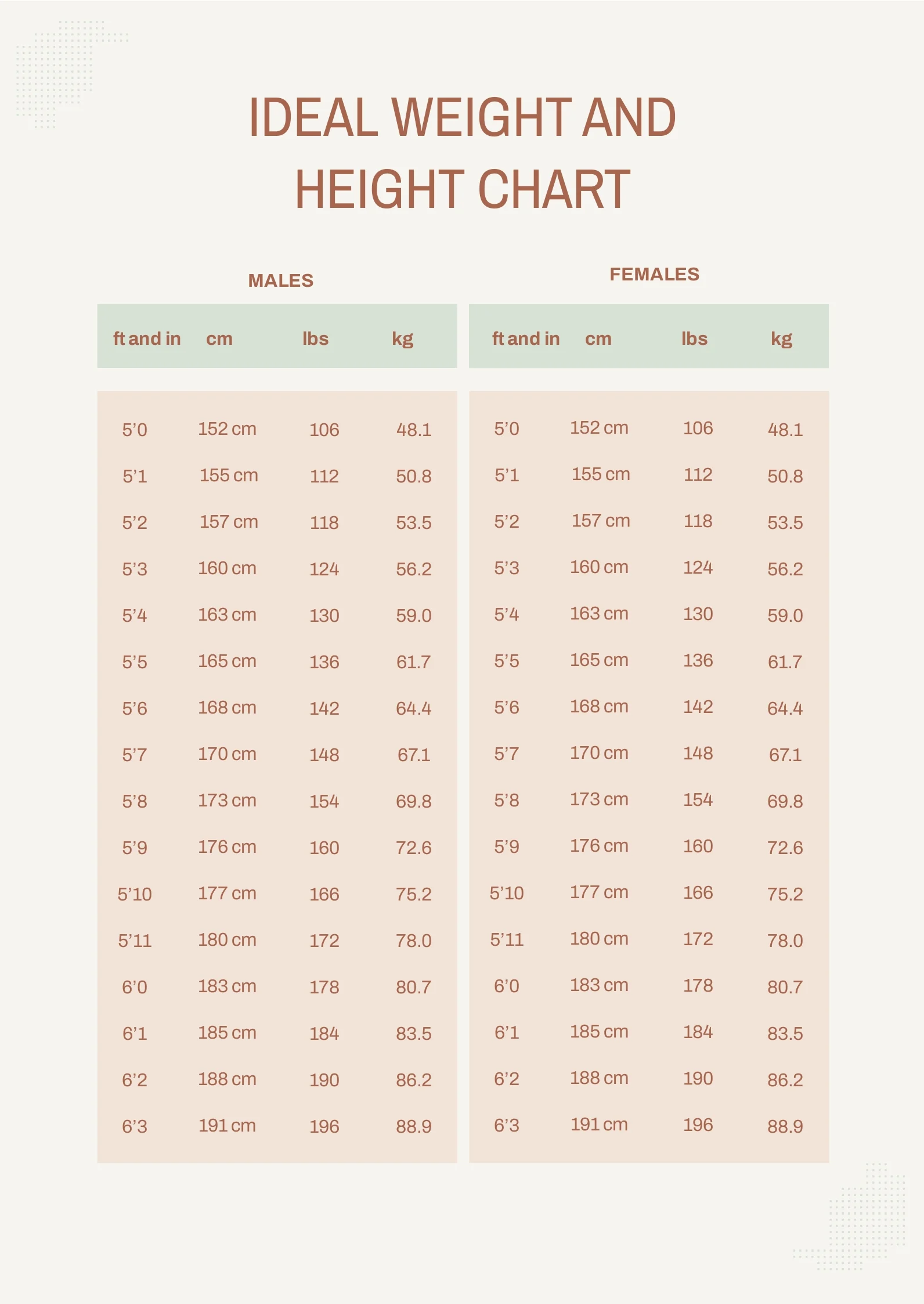
Individual Health Factors:
Besides these methods, individual factors such as muscle mass, bone density, and overall health status can also influence what can be considered an ideal weight.
These methods and studies highlight that there isn’t a one-size-fits-all answer to what an ideal weight is, and it might be beneficial to consult with healthcare professionals to determine a healthy weight range based on individual circumstances.
What is my ideal BMI ?
History
The concept of BMI can be traced back to the 19th century when a Belgian mathematician and statistician named Adolphe Quetelet created the Quetelet Index.
This index was a simple way to relate a person’s weight to their height, with the formula: BMI = weight(kg) / height2(m2).
Over time, the Quetelet Index evolved into what we now know as the Body Mass Index (BMI). It gained popularity as a simple, easy-to-use tool for categorizing individuals into underweight, normal weight, overweight, or obese categories based on World Health Organization (WHO) standards.
Pros
Simplicity:
BMI is easy to calculate and requires only two pieces of information: weight and height.
Cost-effective:
It’s a cost-effective method for identifying individuals who are underweight, normal weight, overweight, or obese, especially in large populations.
Standardization:
BMI provides a standardized method that can be used across different populations and age groups.
Screening Tool:
It serves as a good initial screening tool to identify individuals who may be at risk of weight-related health issues.
Research Tool:
It’s a useful tool for researchers studying obesity and its health effects at a population level.
Cons
Lack of Precision:
BMI doesn’t distinguish between muscle and fat. Therefore, someone with a lot of muscle mass may be categorized as overweight or obese when they are actually in good health.
Individual Variability:
It does not account for variations in body composition, bone structure, and racial and gender differences.
Doesn’t Indicate Fat Distribution:
BMI doesn’t provide information on fat distribution within the body, which is a significant factor in assessing health risks like cardiovascular disease.
Not Suitable for Everyone:
It may not be a suitable indicator of health for certain groups of people, like athletes or older individuals, who may have different body composition.
Over-simplification:
By reducing the assessment of health to a single number, BMI oversimplifies the complex nature of health and body weight.

Summary
BMI is a simple, easy-to-use tool for categorizing individuals based on their weight relative to their height. While it serves as a good initial screening tool and is useful in research and public health settings, its limitations mean it should not be used as the sole indicator of health or body composition. It’s often more informative when used in conjunction with other measures and assessments carried out by healthcare professionals.
Ideal Body Fat Percentage:
Studies and Recommendations:
Body Fat Percentage Cut-offs:
A study conducted on adults aged 45-64 established body fat percentage cut-off points of 25.8% for men and 37.1% for women as determinants of a healthy body weight range (6).

Health Risks:
Various studies have linked high body fat percentages to increased risks of chronic diseases such as diabetes, heart disease, and certain types of cancer. Lower body fat percentages, especially when achieved through physical activity and a balanced diet, have been associated with lower risks of these diseases.
Pros:
More Accurate Than BMI:
Body fat percentage provides a more accurate picture of an individual’s fitness level as it differentiates between fat and muscle.
Health Risk Assessment:
It’s a useful tool for assessing the risk of diseases associated with high levels of body fat.
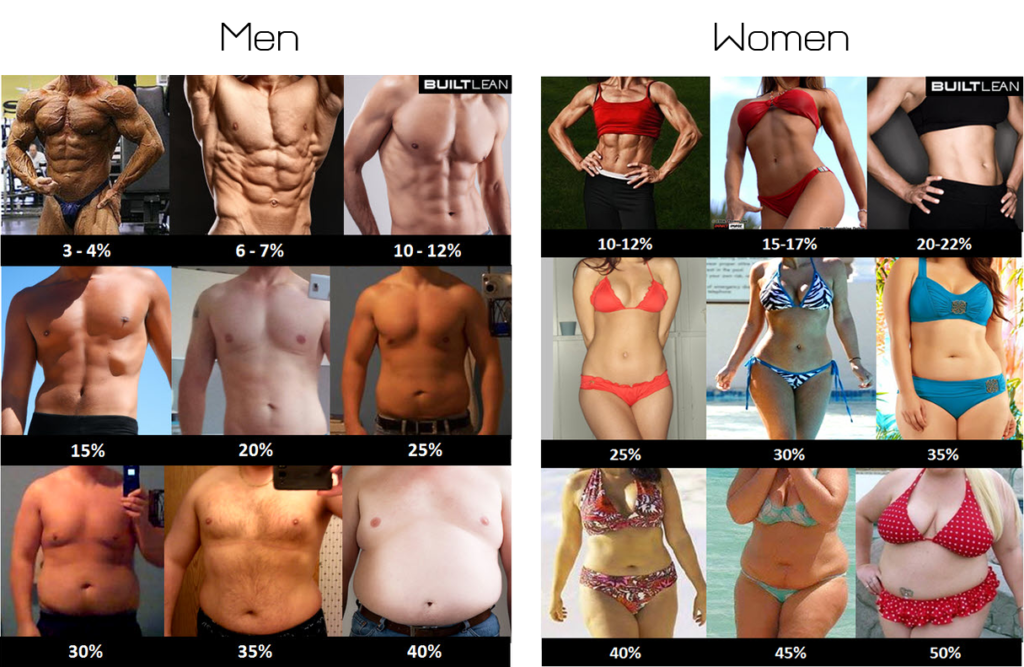
Cons:
Measurement Challenges:
Accurate measurement of body fat percentage can be challenging and may require specialized equipment and trained professionals.
Cost and Accessibility:
Advanced methods of measuring body fat percentage can be expensive and may not be easily accessible to everyone.
Measurement Methods:
Skinfold Calipers:
By measuring the thickness of skinfolds at various parts of the body, an estimate of body fat percentage can be derived. However, the accuracy of this method can vary based on the skill of the person performing the measurements.
Bioelectrical Impedance Analysis (BIA):
This method sends a small electrical current through the body to measure the resistance and estimate body fat percentage. It’s quick and non-invasive but can be affected by hydration levels and other factors.
Dual-Energy X-ray Absorptiometry (DEXA):
DEXA scanning provides highly accurate measurements of body fat percentage, along with bone density and muscle mass, but it’s more expensive and requires specialized equipment.
Hydrostatic Weighing:
This method involves submerging the individual in water and measuring their displacement to estimate body fat percentage. It’s considered very accurate but is also expensive and not widely available.
Air Displacement Plethysmography (Bod Pod):
Similar to hydrostatic weighing, but using air displacement instead of water, this method provides an accurate estimate of body fat percentage but requires specialized equipment and trained personnel.
Summary:
The ideal body fat percentage can vary between individuals based on factors like age, gender, and fitness level. While having a lower body fat percentage within a healthy range is associated with lower risks of certain diseases, measuring body fat accurately can be challenging and may require access to specialized resources. It’s advisable to consult with healthcare professionals to understand your body composition and receive personalized advice on achieving or maintaining a healthy body fat percentage.
What is your Body Fat Percentage ? Find out using our Free Calculator
Waist-to-Height Ratio (WHtR)
The Waist-to-Height Ratio (WHtR) is a measure used to assess the distribution of body fat. It’s calculated by dividing an individual’s waist circumference by their height. This measure is emerging as a potentially better indicator compared to Body Mass Index (BMI) to assess obesity, especially among certain populations like Southeast Asians due to their predisposition to central adiposity and coronary artery disease. (7)
History:
The history of WHtR as a health indicator isn’t as long or well-documented as that of BMI. However, it has been gaining traction in recent years due to its simplicity and effectiveness in identifying health risks associated with central obesity.
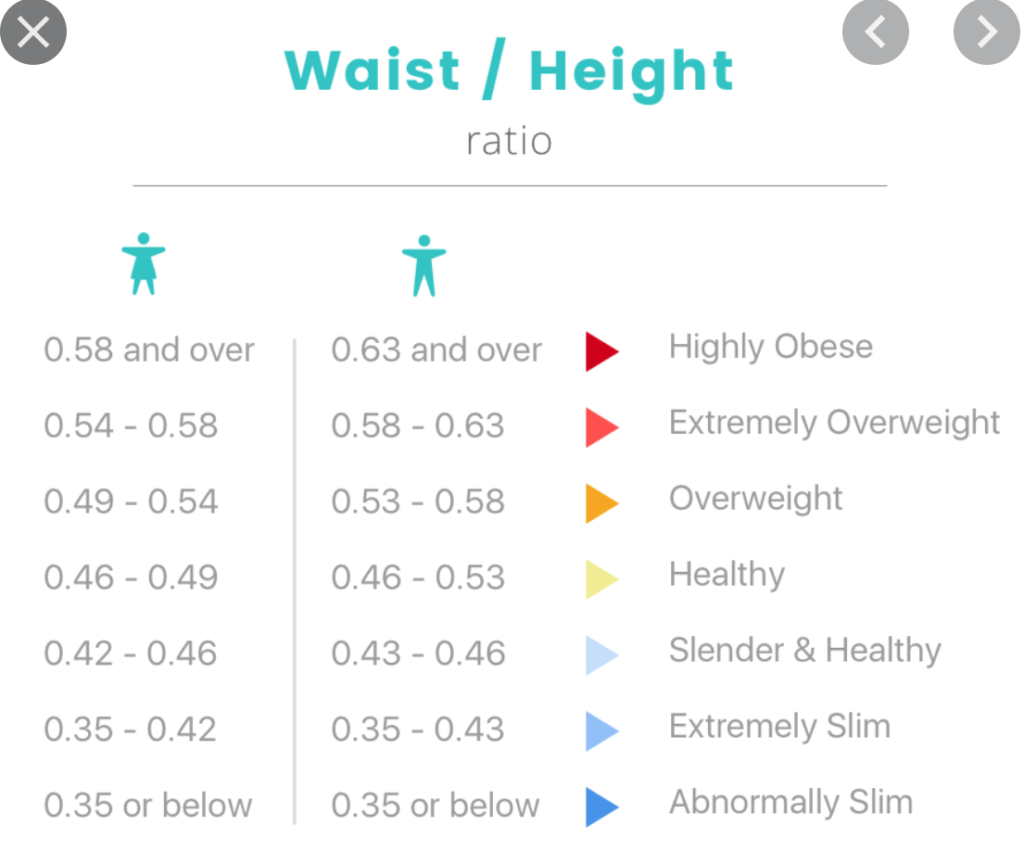
Studies and Comparisons with BMI:
Effectiveness:
Studies have shown that WHtR is a better predictor of hypertension, diabetes, and cardiovascular diseases compared to traditional obesity indices like BMI, waist circumference (WC), and waist-hip ratio (WHR). (8)
Predicting Health Risks:
A large-scale study analyzing the health of 300,000 people found WHtR to be better at predicting high blood pressure, diabetes, and heart attacks. (9)
Associations with Health Metrics:
WHtR, along with other obesity indices, has been positively associated with blood pressure, diabetes, LDL-cholesterol, and triglycerides, and inversely correlated with HDL-cholesterol4.
Pros:
Simple Calculation:
The calculation of WHtR is straightforward, requiring only the measurement of waist circumference and height.
Indication of Central Obesity:
WHtR is particularly effective in indicating central obesity, which is a risk factor for many chronic diseases.
Cons:
Lack of Standard Cut-off Values:
Unlike BMI, there isn’t a universally accepted set of cut-off values for WHtR, although some studies suggest cut points of 0.53 for men and 0.54 for women for whole body obesity, and 0.59 for abdominal obesity in both genders. (10)
May Not Reflect Total Body Fat:
Similar to BMI, WHtR may not provide a complete picture of an individual’s total body fat or muscle mass.

How It’s Measured:
WHtR is measured by simply dividing the waist circumference (measured at the midpoint between the lower margin of the last palpable rib and the top of the iliac crest) by the height of the individual.
Summary:
WHtR is seen as a potentially better indicator of obesity-related health risks compared to BMI, especially for identifying central obesity. Its simple calculation makes it an accessible tool for initial health risk assessment, although it might not provide a comprehensive understanding of an individual’s body composition. Like with BMI, the WHtR should be used as part of a broader assessment of individual health, ideally conducted by healthcare professionals.
Don’t forget to check out our Resources page, which includes 7 different calculators you can use for FREE.
Download our FREE e-book HERE, which describes in detail 120 TIPS for Losing Weight & Bonus Tips for Postpartum Weight Loss & Dad’s Postpartum Experience








